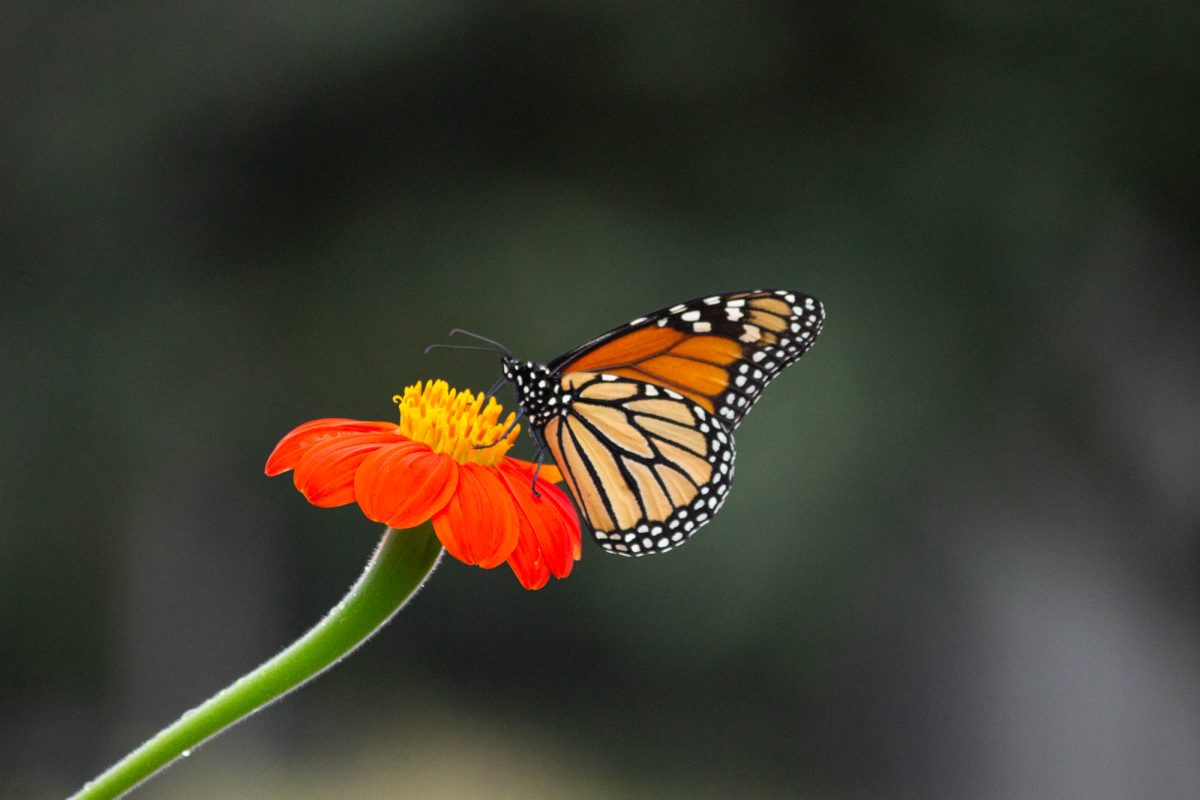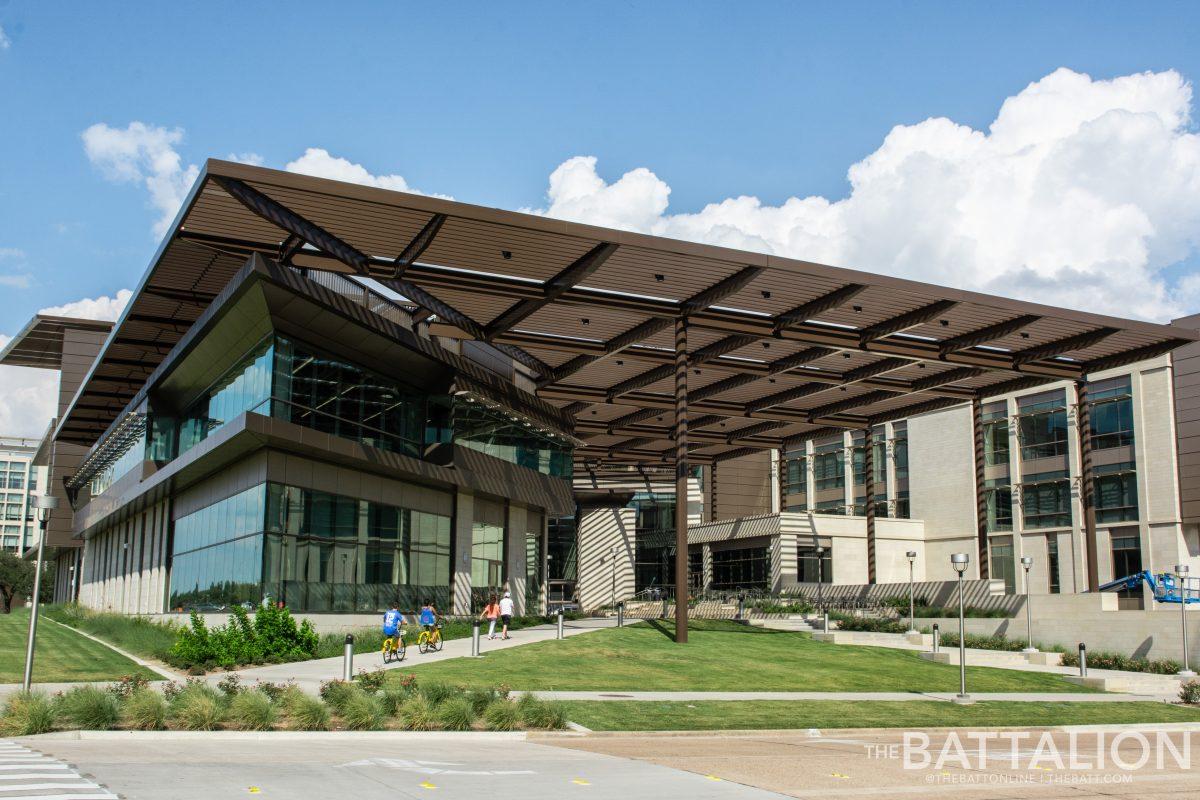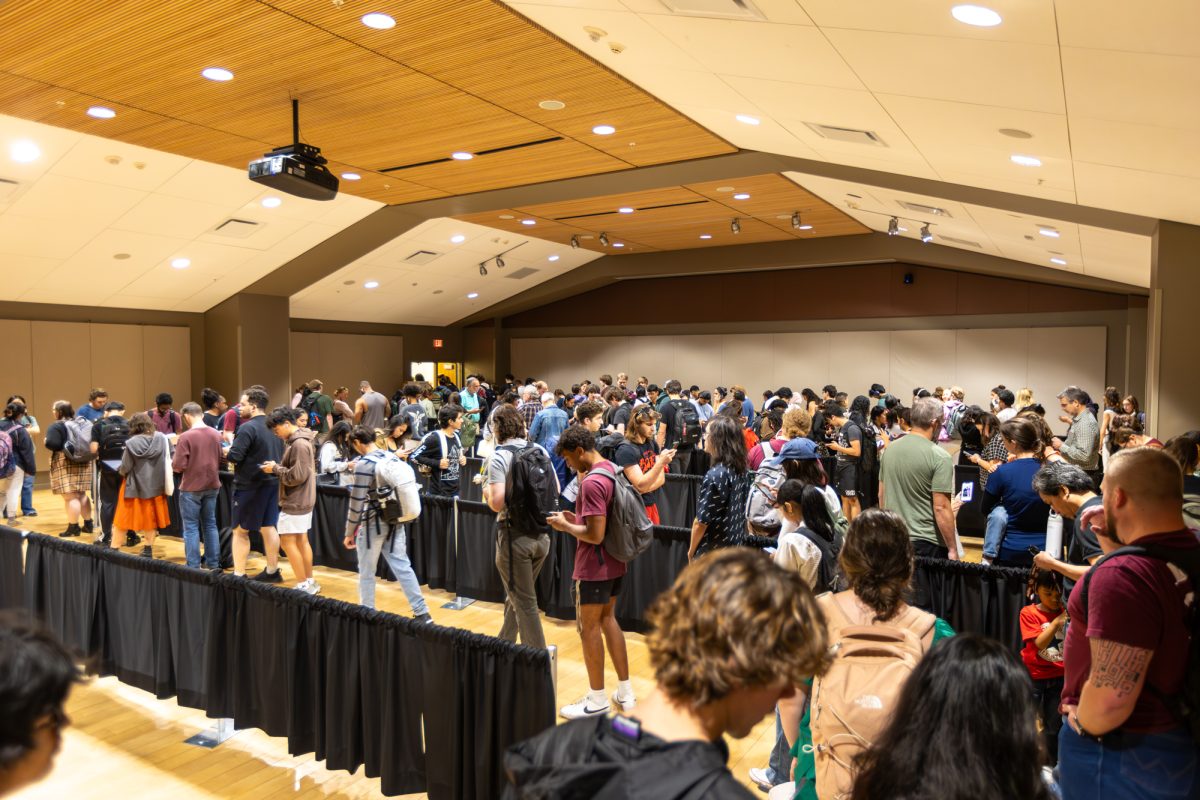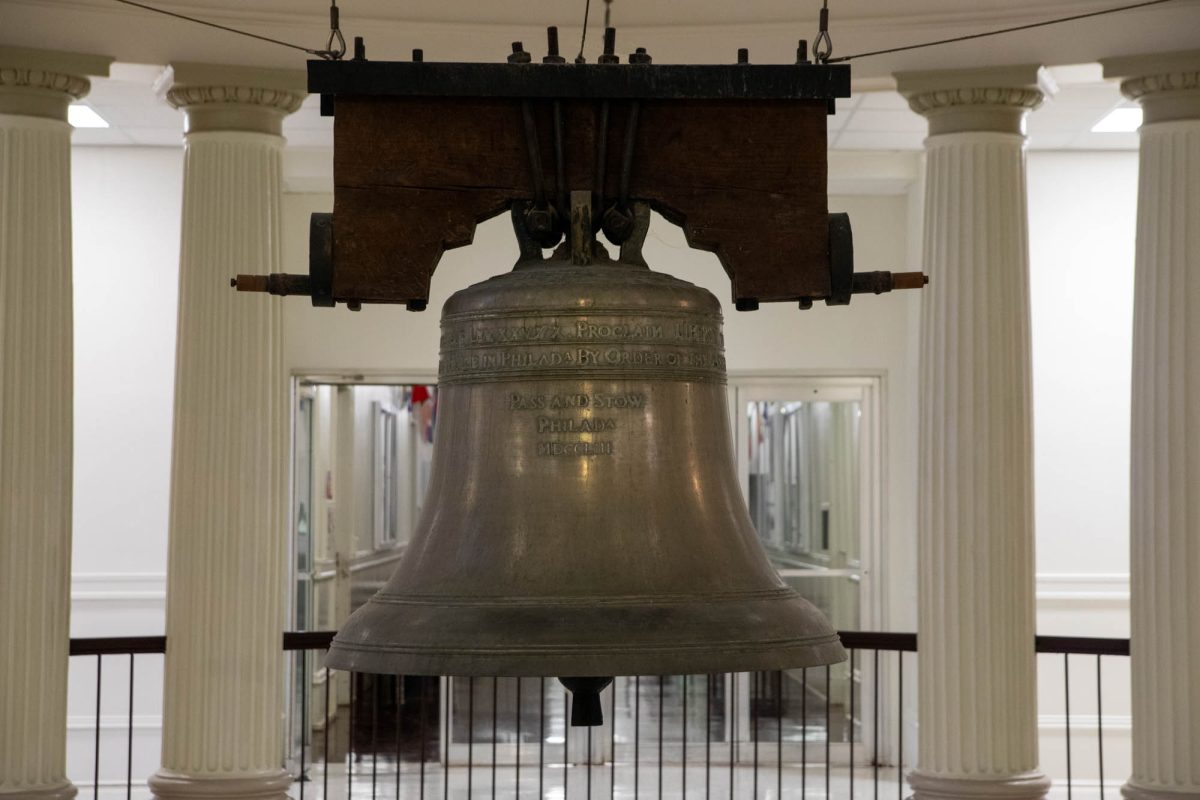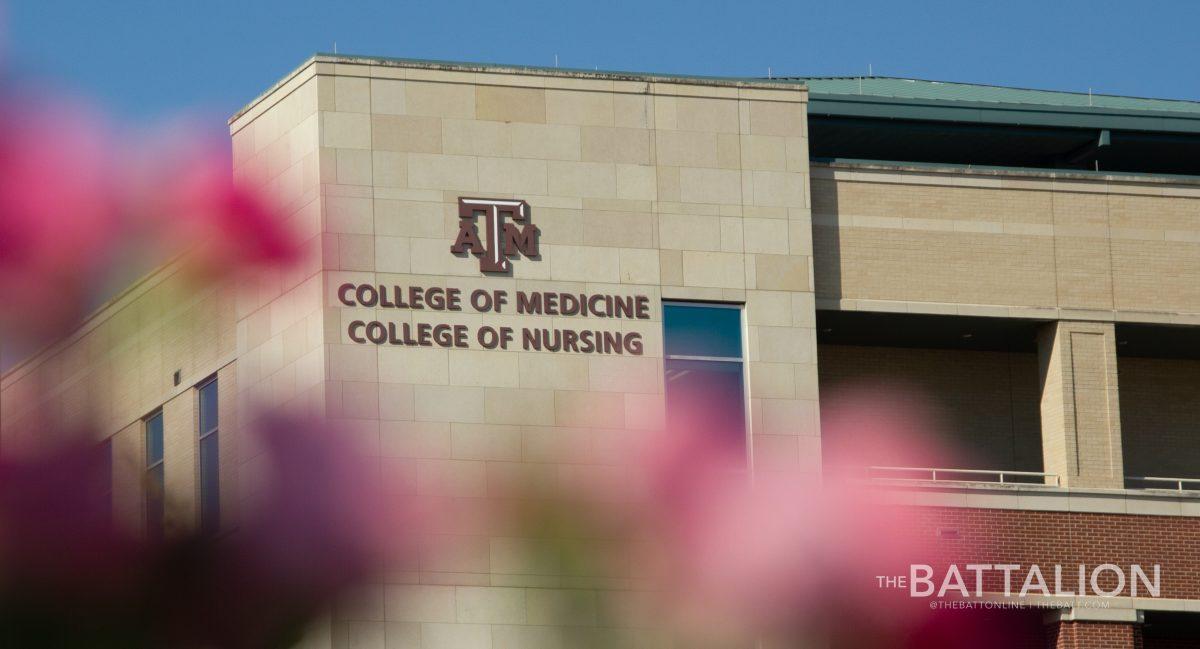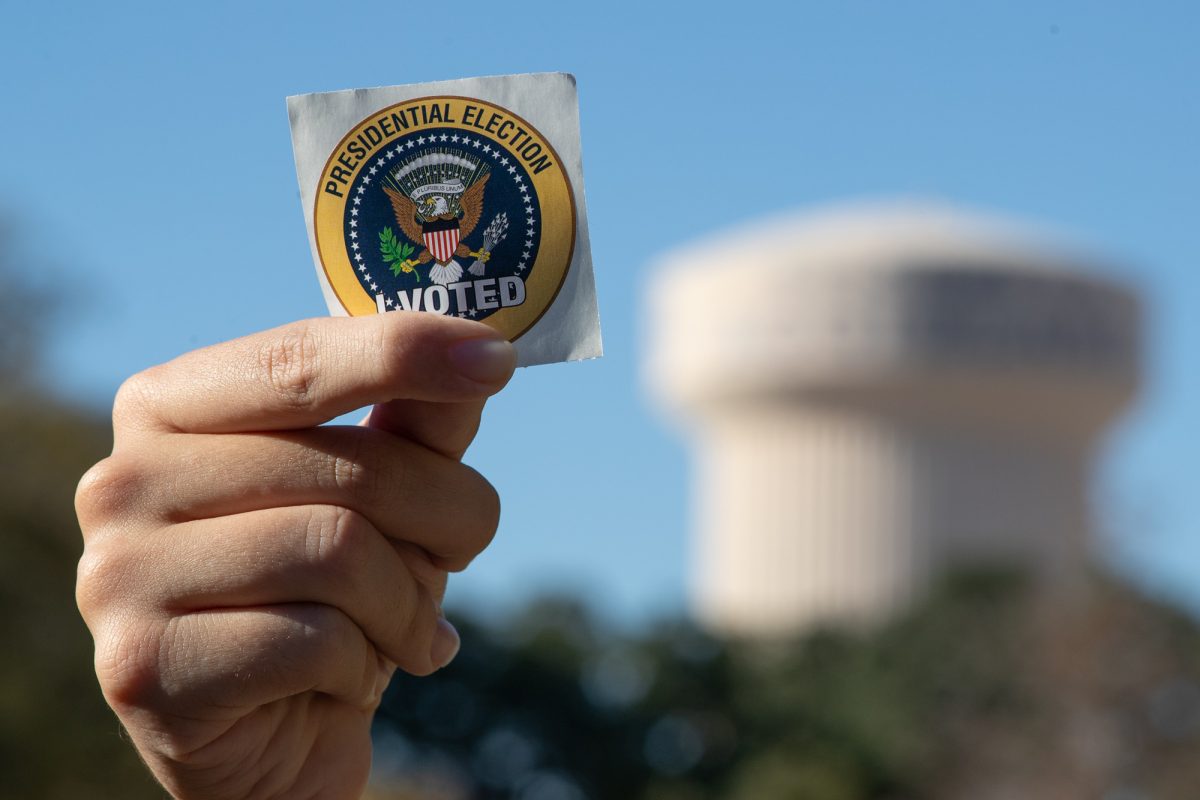Monarch butterfly season has set upon Bryan-College Station. The orange and black insects are filling the skies as they pass through Brazos Valley for the second time on their migration journey south into Mexico.
Professor of entomology and director of the Knowledge Engineering Laboratory, Robert Coulson, Ph.D., said that monarch migration is a year-long process that begins and ends in central Mexico.
“The monarch butterfly migration is a truly remarkable phenomenon,” Coulson said. “In the wintertime, the monarchs aggregate in central Mexico in oyamel fir forests … and in the spring, they begin their immigration into Texas.”
The monarchs then reproduce one or two times using milkweed as their host plant before dispersing up north. By the end of summer, monarchs begin their return to South America to repopulate and prepare for their next journey.
“In the fall of the year … the initial population has reproduced four times now, and that fourth generation is what is migrating back to Texas,” Coulson said. “The migration begins to channel down as it gets into Texas … and the populations are very concentrated as they move into Mexico.”
Pollinators, and butterflies specifically, are an essential part of Texas’ ecosystem. According to a study conducted by the University of Texas at Austin, butterflies add roughly $120 million to Texas’ cotton harvest annually. Monarch migration is crucial to the survival of the pollinators, but Coulson and other researchers have identified a significant threat to them.
“One of the things that we discovered was that there was a very large amount of road kill associated with Texas roadways,” Coulson said.
Coulson’s research began with funding from the Texas Comptroller’s Office and has since been used to find solutions with the help of the Texas Department of Transportation, or TxDOT.
“The project that we have with [TxDOT] right now is we constructed light deflectors at a couple of different locations to see if we can divert the monarchs across the roadways,” Coulson said. “So that they’re not subject to road kill.”
Beyond statewide highway issues, local problems — like a lack of milkweed in the Brazos Valley — are harming the monarch population as well. Ann Boehm is a community volunteer working alongside the Texas Master Naturalists and the city of College Station to boost monarch migration in the area.
“Milkweed is the only plant that a monarch butterfly will lay her eggs on,” Boehm said. “There was this great chasm in College Station [and] the Brazos Valley where there was no milkweed.”
Boehm saw a need in the community and decided to step forward. With the help of the former head of College Station Parks and Recreation, a small plot of land was set aside for a butterfly garden. Boehm gathered a group of volunteers, which she named Butterflies in the Brazos, to work alongside the city to create a pollinator-friendly environment.
“The goal was to plant all native plants to encourage the migration and also to create a garden that could sustain pollinators,” Boehm said. “The garden is sustained by volunteers, and a big part of it is the Texas Master Naturalists.”
Boehm said Texas A&M has also gotten on board with the project and has helped fulfill research and education needs for local pollinators.
“There has been a lot of education about the use of pesticides and herbicides,” Boehm said. “We have to have proper habitats for butterflies and there’s been a lot of education … about how to create a butterfly habitat.”
Coulson said monarch butterflies could soon be considered endangered, making his research — and Boehm’s work — important assets to the ecosystem. He also said the applied aspect of the research by TxDOT was a quintessential example of how land grant research should be used.
“You have basic research that leads to identification of a problem and then a response by an agency like TxDOT to do something about it,” Coulson said. “So you’re implementing the knowledge and trying to mitigate loss. … That’s pretty significant.”
Researchers like Coulson have laid the groundwork for action by agencies like TxDOT and volunteers like the Butterflies in the Brazos, which have already helped to stimulate migration and mitigate loss. However, there is always more that can be done, and Boehm is an advocate for people to create their own pollinator habitats at home.
“We all need to be educated about pollinators,” Boehm said. “ … You need your host plants. You need your nectar plants, and we need to really limit the use of herbicides and pesticides. If we want to continue eating, we need pollinators.”


